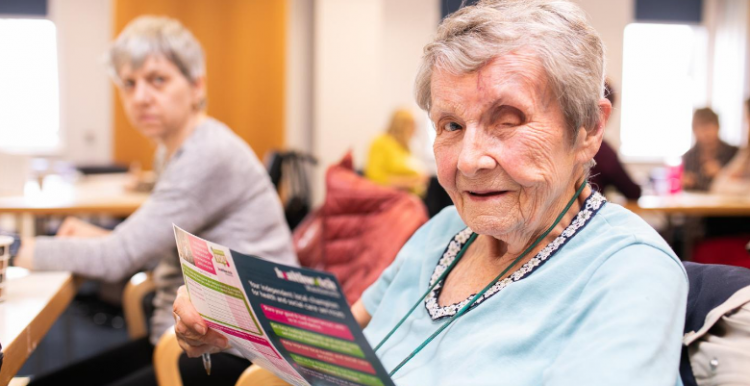What you need to know when visiting a care home (updated 8th March 2021)

New Guidance from 8 March 2021
From Monday 8 March, residential care providers can arrange for visits to residents from single named visitors and essential care givers.
Once the data shows it is safe, the Government also has plans to go further and allow more visiting - and more visitors. In mid-April, the Government will look carefully at the effectiveness of the vaccine for people living in care homes, as well as levels of infection in the local community, especially those of any new variants.
This guidance has been taken from gov.uk.
Can I visit someone in a care home?
All care home residents can nominate a single named visitor for indoor visiting. These visits will be supported by providing visitors with rapid lateral flow device (LFD) tests on every visit and appropriate personal protective equipment (PPE).
Those with highest care needs can also nominate an ‘essential family carer’. With the agreement of the care home, these visitors will have access to the same testing and PPE as care home staff, so they can provide support with washing and dressing or eating well.
For those not nominated as single named visitors, visits can still be arranged outdoors, in visiting ‘pods’, behind windows, or behind substantial screens.
It is recommended that care homes operate a simple booking or appointments system to enable visits.
In the event of outbreaks, care homes should immediately stop visiting (except in exceptional circumstances, such as end of life) to protect vulnerable residents, staff and visitors.
Vaccination is not mandatory and is not a condition of visiting.
Go to full guidance
For the most up to date guidance, including information of what should be included in your care home’s visiting policy, visit the Gov.uk website.
See also the guidance for supported living settings.
How do I find out the visiting policy of a care home?
Each home is unique, so providers will design their own visiting arrangements that take into account the needs of their residents and what is possible within the layout and facilities of that home.
In producing these policies, providers should work collaboratively with residents, families and local social care and health professionals to strike a good balance between the risks and benefits of visiting.
Visiting policies should be made available and/or communicated to residents and families.
Do I need to take a test to be able to visit my relative?
If you are visiting a care home resident as a named visitor, you will be required to take a rapid LFD test and test negative before every visit. If visitors test positive, they must immediately return home, self-isolate and complete a further test which will be provided to them by the care home.
The care home provider should provide full details on their testing process and obtain consent from visitors prior to their participation in testing.
If you have arranged with your local care home to be a resident’s ‘essential care giver’, you will be supported to follow the same testing arrangements in place for care home staff.
Those visiting loved ones indoors at the end of their lives may be offered a test on arrival for their visit, but those visiting residents outdoors will not require a test. However, if visitors are displaying any symptoms of coronavirus, they should not visit the care home, self-isolate and order a test immediately.
All visitors may be asked screening questions upon arrival. These may include:
- Have you been feeling unwell recently?
- Have you had recent onset of a new continuous cough?
- Do you have a high temperature? A care home may consider providing a temperature check for all visitors to provide confidence to visitors and to staff.
- Have you noticed a loss of, or change in, normal sense of taste or smell?
- Have you tested positive for COVID-19 in the past 10 days?
- Have you had recent contact (in the last 14 days) with anyone with COVID-19 symptoms or someone with confirmed COVID-19 – if yes, should you be self-isolating as a family member or as a contact advised to do so by NHS Test and Trace?
- Have you returned from an overseas visit recently and are you still in the quarantine period?
What is likely to change when I visit my loved one?
Indoor visits may take place in designated visiting rooms, but in all cases, they should take place in a well-ventilated room. Those visiting indoors must observe strict social distancing from other residents, visitors and staff at all times, and follow care home policies in place for testing and use of appropriate PPE.
There may be some instances where visits are supervised, for example during a visitor’s first visit. This should be clearly explained in the care home’s visiting policy.
Any additional visits should take place where possible outside. Other appropriate visits include:
- Visits under a cover such as an awning, gazebo or open-sided marquee, where residents and visitors remain at least 2 metres apart.
- Visits in temporary outdoor structures, such as COVID-secure visiting areas/pods which are enclosed to some degree but are still outside the main building of the home. These areas can only allow one visiting party at a time, will require good ventilation and screens between residents and visitors.
- Visits in a dedicated room such as a conservatory, which can be accessed from outside of the home. These areas can only allow one visiting party at a time, will require good ventilation and screens between residents and visitors.
- Visits at a window.
What should I do to keep the person I am visiting safe?
Named visitors should be tested using rapid LFD tests before every visit, must wear the appropriate PPE, and follow all other infection control measures. The Care home will guide visitors on infection control measures.
Visitors and residents may wish to hold hands but are advised to keep physical contact to a minimum as any contact increases the risk of transmission.
Visitors should also be careful to ensure they observe strict social distancing from other residents, visitors and staff at all times.
How often can I visit a care home?
Care homes will decide how often and for how long it is possible for named visitors to come into the home. This is likely to be depend on practical considerations, such as the layout of the home and the numbers of residents and families who may wish to have visits. In practice this may mean that the frequency of visits is limited, however, local Directors of Public Health may provide advice to homes allowing more regular visiting if they are confident that infection control measures and other arrangements are in place.
For outdoor visits, the guidance recommends a maximum of two visitors at any one time.
This is in order to limit the overall numbers of visitors to the care home and the consequent risk of disease transmission.
What happens if there is an outbreak at the care home?
If there is a declared outbreak in a care home, then it is recommended that visiting be restricted, with only ‘end of life’ visits recommended. These restrictions will continue until the care home has been assessed to be in recovery. You should be informed of this.
What happens if I can’t see my family or friend in the care home?
If providers are unable to safely allow visits in line with new guidance, alternative ways of communicating between residents and their families and friends should be discussed and offered. The care home should also provide regular updates to residents’ loved ones on their mental and physical health, how they are coping and identify any additional ways they might be better supported, including any cultural or religious needs.


